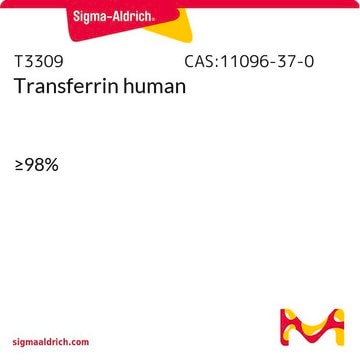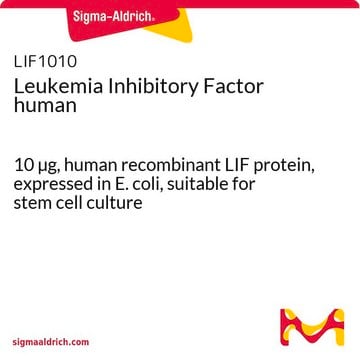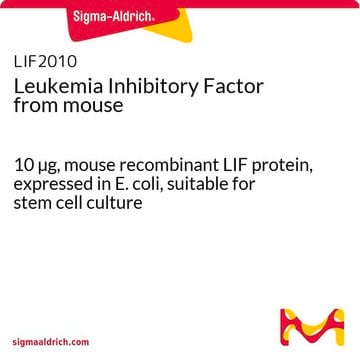L9545
Leukemia Inhibitory Factor human, animal component free
recombinant, expressed in rice, 500 μg/mL
Sinonimo/i:
Leukemia Inhibitory Factor human, LIF, rLIF
About This Item
Prodotti consigliati
Ricombinante
expressed in rice
Saggio
>95% (SDS-PAGE)
Potenza
>1 x 108 units/mg ED<sub>50</sub>
Concentrazione
500 μg/mL
tecniche
cell culture | mammalian: suitable
Impurezze
<0.05 EU/μg endotoxin
N° accesso UniProt
Condizioni di spedizione
dry ice
Temperatura di conservazione
−70°C
Informazioni sul gene
human ... LIF(3976)
Cerchi prodotti simili? Visita Guida al confronto tra prodotti
Azioni biochim/fisiol
Stato fisico
Note legali
Codice della classe di stoccaggio
10 - Combustible liquids
Punto d’infiammabilità (°F)
Not applicable
Punto d’infiammabilità (°C)
Not applicable
Certificati d'analisi (COA)
Cerca il Certificati d'analisi (COA) digitando il numero di lotto/batch corrispondente. I numeri di lotto o di batch sono stampati sull'etichetta dei prodotti dopo la parola ‘Lotto’ o ‘Batch’.
Possiedi già questo prodotto?
I documenti relativi ai prodotti acquistati recentemente sono disponibili nell’Archivio dei documenti.
I clienti hanno visto anche
Articoli
Leukemia Inhibitory Factor (LIF) is a stem cell growth factor used for the in vitro culture of pluripotent mouse embryonic stem cells (ES cells).
Il team dei nostri ricercatori vanta grande esperienza in tutte le aree della ricerca quali Life Science, scienza dei materiali, sintesi chimica, cromatografia, discipline analitiche, ecc..
Contatta l'Assistenza Tecnica.











